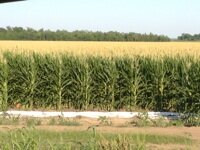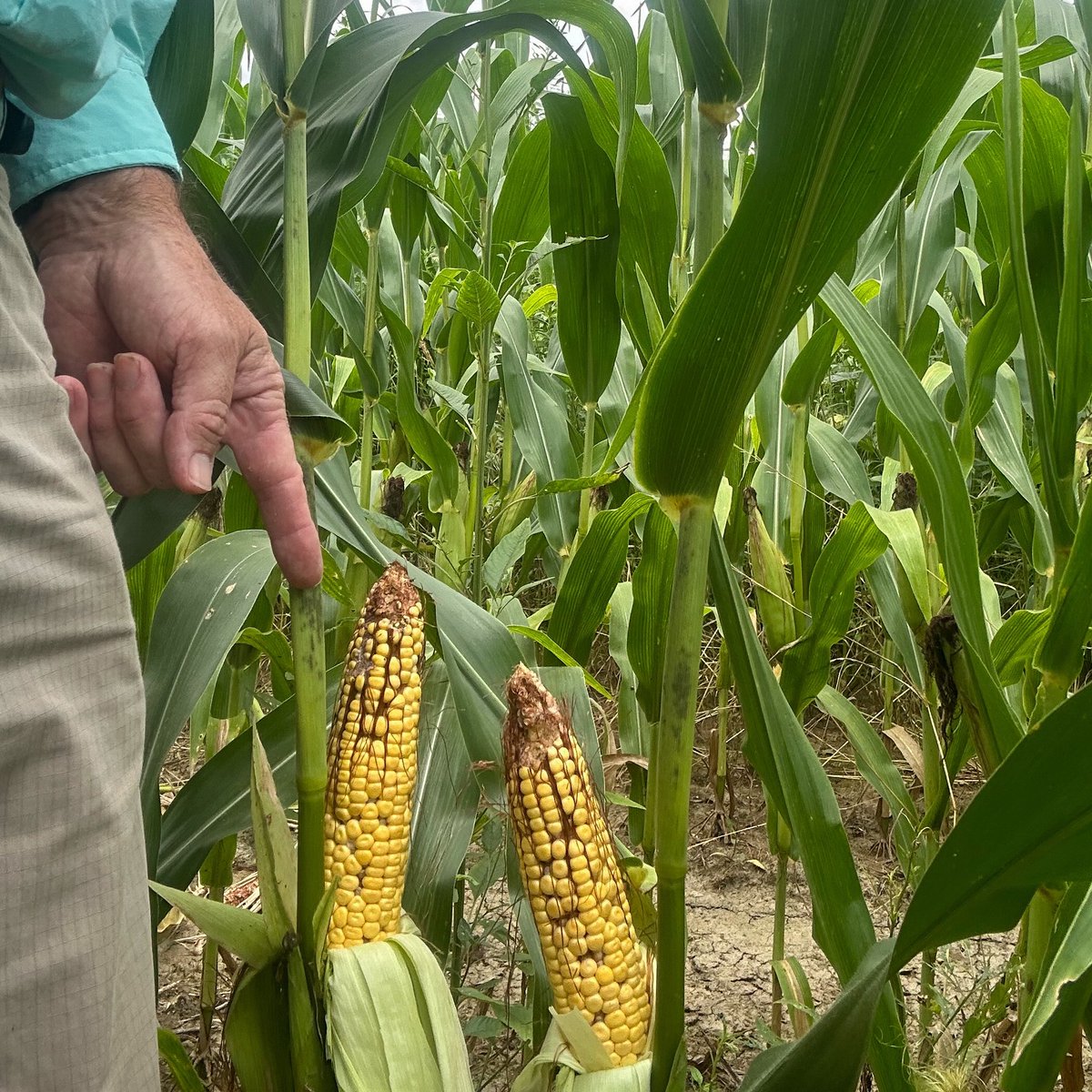
Erick Larson
@MStateCorn
Professor and State Extension Corn, Wheat, & Sorghum Specialist - Mississippi State University 🌽
Greensnap occurred in many areas where storms produced high winds the last several weeks. This severs the lower #corn stalk, leaving it without an ear, so this can be devastating. Prior to tassel, rapidly developing stalks may be brittle and vulnerable. 🌽#mscorn #MSUext


Frequent rain caused plenty of #corn nitrogen issues this year. Perhaps the most important lesson is that N timing is critical. Late N timing stunted corn growth, resulting in short plants with small ears - not a favorable outcome. 🌽#mscorn #MSUext #mscrops #soilfertility


#Corn kernels near the tip often fail. Ears prioritize their lower portion and set kernels by 20 days after tassel. Thus, kernels often abort when energy is limiting. Reasons may include: 🌽Saturated soil ✔️Cloudy days 🌽Nutrient deficiencies ✔️Genetics 🌽Variable growth

Altering your late corn #irrigation schedule is a great opportunity to improve #ROI. Corn’s water use drops off nearly half compared to peak use as it nears maturity. Thus, you can prolong intervals and use a drier threshold. 🌽#mscorn #MSUext #plant25 #corn


MS Soybean Promotion Board 2025 Soybean Yield Challenge entry deadline is August 1, 2025. Great way to showcase your farm.
“I think we’re better irrigators because we have adopted some of the things that we’ve learned through Extension of how to do better and be more efficient.” Read Bill O'Neal's Extension Matters story here: ow.ly/teQm50WrZFK #mscrops #MSUext
More that have been sent to me across 4 states. All have the same thing in common 🧐
🤢
Corn smut is a fungal disease that infects plants causing grayish galls to form on the ears, leaves, stalks and tassels. These galls are filled with dark spores. I never get tired of finding smut as each gall is different like a fingerprint like this one @CropNetwork #Corn
Because I’m walking plots today…..be mindful, there is plenty of “poop spot” (the black spots in the pics) on corn this year in MS. Two things to know: 1) this isn’t tar spot, and 2) fungicides don’t protect you from poop spot #mscrops
Dent corn fungicide trial applied this afternoon. 13 different treatments (with the check). Some great Curvularia leaf spot already present, and a little southern rust @MississippiCorn @MStateCorn #mscrops
Deciding when to terminate #irrigation starts by estimating #corn maturity. We do this by evaluating kernel milk-line progress. Integrating crop maturity with soil moisture level allows us to better predict needs and greatly improve #ROI. 🌽#mscorn #MSUext #plant25 #mscrops
Frequent rain has caused many #corn mgmt issues, including hefty nitrogen loss. N timing is critical to limit exposure to wet soil causing losses. Applying high fertilizer rates early in spring exposed N to loss. Thus, many deficiencies are showing up late. 🌽#mscorn #MSUext

Moisture sensors greatly help us #irrigate and realize what is happening underground. For instance, during the last week, sensors show #corn roots in our CVP fields nearing irrigation began pulling moisture over 30-in deep. So much for shallow roots…. 🌽#mscorn #MSUext


The high residue fields are always the fun ones to walk into #plantpathology #corndisease #mscrops
#Corn begins forming dents during dough stage, potentially confusing expectations. These kernels will be a matte, butter yellow color. Hard starch will not be formed yet, so kernel tips will still be soft. You can check this with your fingernail. 🌽#mscorn #MSUext #plant25

As kernels ripen, you may want to check progress. We are seeing rows oddly distorted in early #corn. Kernel rows form well prior to tassel, so super wet May weather likely hampered ears. Herbicides may promote similar injury, so they could contribute as well. 🌽#mscorn #plant25


